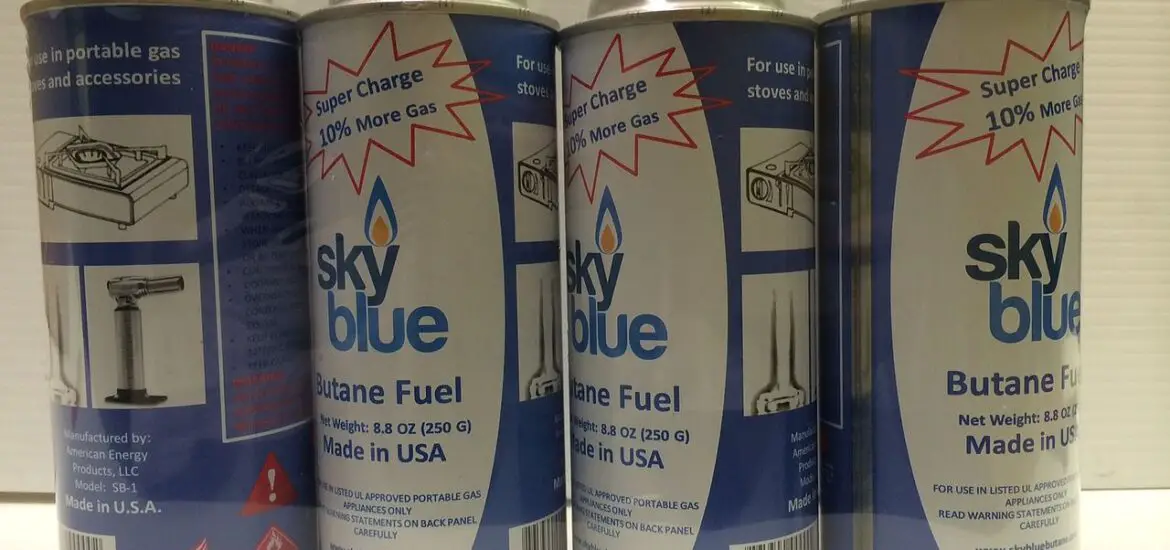At the heart of our beloved cooling systems—air conditioners, fridges, and freezers—sits a little champion called a refrigerant can. And hey, the kind of refrigerant you choose can be a game changer for your device’s performance and efficiency.

Table of Contents
Understanding the Basics of a Refrigerant Can
What is a Refrigerant Can?
Now, what’s this buzz about a refrigerant can? Picture a sturdy container—often a metal one—primed to safely hold and deliver refrigerants, which are special substances or mixtures designed to create a cool, ah, oasis in your appliances.
Defining Refrigerants
Refrigerants, you ask? Think of them as the lifeblood of cooling systems, responsible for the magic behind that refreshing breeze from your AC or the chill in your freezer.
Purpose and Function of Refrigerant Cans
Refrigerant cans are there to ensure these vital substances are safely transported, stored, and ultimately, help your cooling systems do their thing.
Common Types of Refrigerants Stored in Cans
There’s quite a lineup of these super coolers—each with its own strengths and weaknesses.
CFCs – Chlorofluorocarbons
Remember when we phased out those ozone-bashing CFCs? These guys were once a big hit but turned out to be not so kind to Mother Earth.
HFCs – Hydrofluorocarbons
Then came the HFCs, a better-behaved bunch with much less ozone depleting potential, but still, they’ve got some global warming issues to sort out.
HCFCs – Hydrochlorofluorocarbons
HCFCs? They’re like a halfway house between CFCs and HFCs—still a bit naughty on the ozone front, but less so.
Natural Refrigerants
And don’t forget natural refrigerants—real green champs that offer a more eco-friendly alternative.
Read more detailed articles on refrigerants here – Articles on Refrigerants: The Ultimate Guide to Understanding Them
Importance of Proper Handling and Storage of Refrigerant Cans
Safety Measures for Handling Refrigerant Cans
Handling these cans is no child’s play, my friend. We’re talking about a soup of chemicals here!
Personal Protective Equipment (PPE)
Don’t skimp on PPE. Get the gloves, goggles, the works. Safety first, always!
Safe Handling Procedures
Follow safe handling procedures to a tee. Careful, careful…and did I say careful?
Dealing with Refrigerant Leaks
If there’s a leak, you’d better know how to handle it. Panic won’t help, but a plan will! If you don’t know how to handle a refrigerant leak, make sure to contact someone who is licensed for it.
Appropriate Storage Practices for Refrigerant Cans
Storing refrigerant cans properly is as crucial as selecting the right refrigerant for your cooling system. It’s about safety, effectiveness, and environmental responsibility. Plus, proper storage can extend the shelf life of the refrigerants, saving you unnecessary costs in the long run.
Storage Temperature Considerations
Ever left a can of soda in the sun? It’s not pretty, right? Same goes for refrigerant cans. These cans need to be stored in a cool and dry place, away from direct sunlight and sources of heat. That means not near radiators or heating pipes, folks! Ideal storage temperatures can vary depending on the type of refrigerant, but as a rule of thumb, aim for a sweet spot between 60 and 80°F (15 and 27°C). Outside this range, the pressure inside the can could increase or decrease, compromising the refrigerant’s effectiveness.
Proper Ventilation
A well-ventilated storage space is key for refrigerant cans. We’re not just talking about a breath of fresh air here—this is about preventing the accumulation of refrigerant vapors that could lead to respiratory hazards or even explosive conditions. So, avoid confined spaces and ensure that there’s plenty of fresh air circulation around your cans. And if you’re storing a lot of refrigerants, consider investing in a mechanical ventilation system.
Legal and Environmental Compliance
Rules, regulations, the law—they’re not just hoops to jump through, they’re about doing right by your community and the environment. In many regions, it’s illegal to vent refrigerants into the atmosphere because of their impact on the ozone layer and global warming. Always use approved recovery equipment to remove refrigerants from appliances. Plus, some areas have specific requirements for storing hazardous materials, including certain types of refrigerants, so make sure to check your local regulations. And remember, being a responsible citizen also means properly disposing of or recycling empty refrigerant cans.
Guide to Buying Refrigerant Cans
Recognizing Quality Refrigerant Cans
Quality counts, so know what to look for.
Material and Construction
Material and construction matter. You want sturdy, solid cans that can take a little rough handling.
Safety Features
Safety features are a must. You want a can that’s built with your safety in mind.
Brand Reputation
Stick to the brands you trust. If they’ve been around a while and people are saying good things, they’re probably doing something right.
Choosing the Right Refrigerant for Your Needs
Choosing the right refrigerant isn’t just about price—it’s about understanding your needs and how to meet them.
Understanding Your Cooling System Requirements
What does your cooling system need? The right refrigerant can make all the difference in the world.
Environmental Impact of Different Refrigerants
What’s the environmental impact of your refrigerant choice? A little research can go a long way.
Cost and Availability
Finally, don’t forget to consider cost and availability. Your wallet matters, too!
How to Use a Refrigerant Can Safely and Effectively
Using a Refrigerant Can
So, you’ve got your can. Now what?
Equipment Preparation
First, prepare your equipment. A little prep work can save you a lot of headaches down the road.
Filling Procedure
Then comes the filling procedure. Don’t just wing it—follow the instructions to the letter.
Post-Filling Steps
And after the filling? More steps to ensure everything is hunky-dory.
Conclusion
In the end, understanding refrigerant cans—how to handle and store them, what to look for when buying, and how to use them safely and effectively—is a crucial part of ensuring your cooling systems work their magic. And remember, always put safety first!